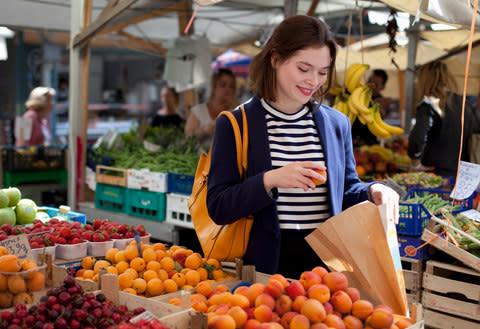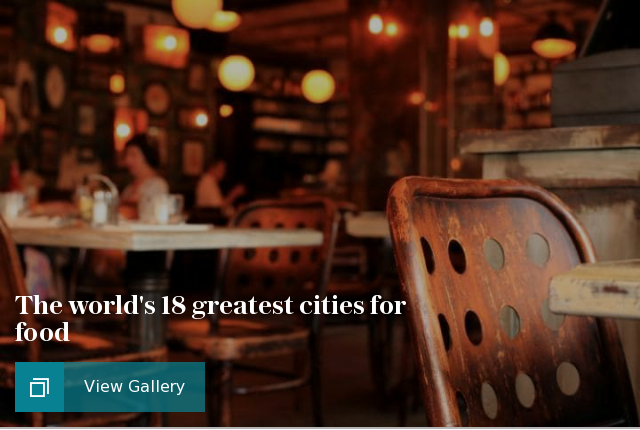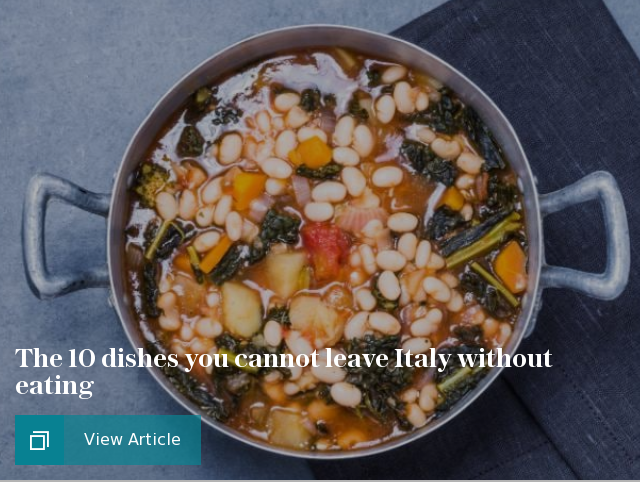Why Rome is the world's coolest place to eat right now

"Gabriele’s secret ingredient is time." Jess explained to me as I licked my oily, flour-dusted fingers. "He leaves the dough to rest for four days before using it. End product: a pizza impossibly fluffy and light.”
"More than I can say for my stomach," I burp-muttered with a half-chewed slice in my mouth.
I was at Pizzarium in Rome’s Prati neighbourhood, a takeaway joint founded by Rome’s 'Michaelangelo of pizza' Gabriele Bonci, as part of a – well – rather hipsterfied Roman Food Tour around Prati, a trendy neighbourhood, handily located within two shakes of a dove’s tail from the Vatican.
The quest of my city break: to experience Rome's burgeoning slow-food movement and zero-kilometre culinary scene (where food is sourced as locally as possible).
It didn't stop me learning the hard way that it’s all too easy to eat badly in Rome: after landing late in the evening, I wandered half-asleep into a tourist trap restaurant around the corner from my hotel where I was subjected to gnocchi more slippery than a politician's promise, doused with garlic to conceal the lack of fresh ingredients. My first gelato, from a shop across from the Colosseum was luminescent with food colouring; it tasted of sugar and refrigeration.
This makes the recent explosion of authentic Roman gaffs focusing on painstakingly prepared, locally produced food something to really celebrate. And during my trip I was determined to get in on some of the action.
A post shared by Shelly Jacobs (@shellyepj) on Oct 17, 2017 at 12:33am PDT
I am not really a pizza person. My experience in London has been largely limited to Papa Johns and the Make Your Own counter in Sainsbury’s. Still it was hard not to get excited about Pizzarium on my Roman Food Tour. It was a delightful establishment, a tiny deli with gleaming butcher tiles and piles of Mulino Marino, the organic stone-ground flour from Piedmont that Bonci uses in his recipes. And – ah – the smells and sounds: the air dense with the hot, sluggish smell of dough and melted cheese. The distant whirr of the ovens in the back. The snip-snip of scissors across soft bread, as black-showercapped ladies behind the counters cut pizzas into squares.
Jess ordered us a spread, which we devoured standing at tables outside: One topped with bits of potatoes and blistered with gently browned cheese. A spicy number flaked with almond and mushrooms and smeared with harissa; my favourite though had three types of onions, translucent and tangled, and fried to a disgustingly delicious grease-varnished crunch.
All were served on a dough base springier than a Hypnos mattress, with a crust more satisfying than that first bite of a Granny Smith.
A post shared by Shelly Jacobs (@shellyepj) on Oct 10, 2016 at 9:27am PDT
The next stop on the food tour was Le Chiccerie, a tiny deli-cafe that specialises in artisanal, hyperlocally-produced cheese. It wasn’t immediately inviting; the white décor sterile; the staff shy and reticent. But, hovering over steel tables (more cheap than hipster chic), eating bits of bread smeared with dop pesto and balls of slightly floral buffalo mozzarella made in Rome, I soon had an epiphany. No wonder Jess raved about it. Then came the climax: truffle pecorino made just miles away in rural Lazio, all earth and spice and cru and cream.
Rome’s locavore restaurant scene is growing steadily. After a sweaty, stimulating afternoon exploring the Roman Forum in the summer heat, I broke bread at Terre e Domus. The establishment is known for its strict commitment to hyper-local food; and views so clear of Trajan’s Column that you can see the carvings of legions crossing the Danube from the window tables.
Prisoners at Rome’s Rebibbia jail grow all of Terre e Domus' ingredients, from the swollen tomatoes, glistening onions and super-fresh spinach to the flavoursome meats.The menu is modest but satisfying. I dined on mozzarella salt-spiked by way of anchovies, and tender, fat-marbled lamb chops and boiled meatballs with herby pumpkin on the side.

The next day I lunched at Pro Loco Pinciani a short walk from the Villa Borghese. It’s a Shoreditchified restaurant with penny-farthing bicycles tacked to the walls and a chef who tries to source all the restaurant’s ingredients from small businesses in Latium.
It was a great place for people-watching, with couples in thick specs and rolled-up jeans nibbling on the organic olives, and chefs zipping pizzas in and out of the ovens in the open kitchen to a strict, jaunty rhythm, as if to music only they can hear.
I gorged on fat strips of pappardelle pasta in aromatic white ragu, and sprinkled with made-in-Rome pecorino cheese. For the secondi, I chose a traditional Roman oxtail stew slow-cooked with chocolate; hot, rich, bellywarming.

Locavore markets are also booming in the city. My first stop was Prati’s Trionfale Market, which – like all grown-up, serious markets – hits you with the sweet, fetid stench of raw meat and the after-pong of disinfectant. It echoed with the chattering of local nonnas and baritone calls of "pesce fresco!" from the fish mongers.
One stall was selling slow-cooked porchetta on toothpicks, stuffed with aromatics, all wobble and salt and meat that collapses in the mouth. In the end, though, I spent most of my time at the wine counters with their Lazio bottles flaunting regional labels like Castelli Romani and Frascati. I ordered a some of the latter variety, Malvasia-Trebbiano, which tasted of lemons and peaches and was served the Roman market style in a white plastic cup.

Another day, I also stumbled across Mercato Campagna Amica on Via di San Teodoro just behing the Roman Forum, with its olive oil from surrounding farms and cake stalls manned by Rome born-and-bred bakers with names like Sonia and Elisabeth.
As a Londoner with a love for any food concept that involve the words 'street' or 'truck', I was inevitably drawn to the gourmet soup van in the mural-tattooed yard out back. I ordered a cup of the asparagus and zucchini, served in a polystyrene cup with a slab of sourdough bread. Sitting at at one of the weathered, sun-polished wooden tables next to a bloke in a waistcoat and working-man’s cap, I felt I could’ve been in Shoreditch. But then took a sip of the soup - fresh, sweet, thick. Clearly Roman hipsters eat much better than their East End equivalents, I thought to myself.
A four-hour Prati neighbourhood food tour from €75 (£66) per person (00 39 331 501 5629; foodtourrome.com)


